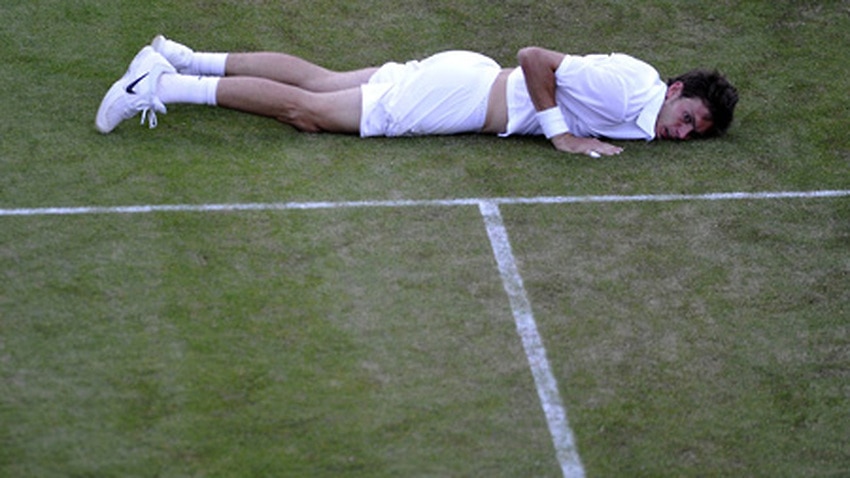
How Do Tennis Players Slide On Hard Courts
Mastering the Art of Sliding on Hard Tennis Courts
Picture a nail-biting tennis match where a player, with a burst of agility, glides across the hard court to return a shot that seemed destined to be a winner. This spectacle, once a rarity on anything but clay, is now a thrilling element of modern tennis. In this article, we’ll delve into the intricacies of the tennis court sliding technique, a skill that combines finesse, strength, and cutting-edge technology to defy the traditional limitations of hard court play.
The Mechanics of Sliding on Hard Courts
Sliding on hard courts is a ballet of physics and finesse. Let’s dissect the elements that make it possible:
- Footwear Technology: The evolution of tennis shoes has been pivotal. Manufacturers have designed footwear that allows for controlled sliding while still providing the grip needed for sudden stops and explosive sprints.
- Body Mechanics: It’s a dance of momentum and control. Players must possess the core strength, flexibility, and balance to manage their body through a slide, ensuring they can recover quickly for the next shot.
- Surface Interaction: Not all hard courts are created equal. The frictional properties vary, with some acrylic and synthetic surfaces offering a slight give that can be exploited for sliding.
Mastering these mechanics is not just about showmanship; it’s a strategic move to widen defensive capabilities and keep opponents guessing.
Training and Techniques for Hard Court Sliding
Developing the prowess to slide on unforgiving surfaces doesn’t happen overnight. Here’s a glimpse into the training behind the technique:
- Specific Drills: Players engage in targeted exercises that enhance the muscles and reflexes necessary for sliding, such as lateral drills and balance-focused workouts.
- Mental Preparation: The mental game is as crucial as the physical. Anticipating when to slide is a split-second decision that can make or break a point.
- Learning from Clay: Many players hone their sliding skills on clay courts, where the surface is more forgiving, before translating those skills to the harder surface.
It’s a testament to their dedication, as they transform a traditionally defensive move into an aggressive strategy.
Risks and Rewards of Sliding on Hard Courts
With high reward comes high risk. Let’s weigh the pros and cons:
- Injury Risk: The hard surface shows no mercy, increasing the chance of injuries to ankles, knees, and hips due to the higher impact of sliding.
- Tactical Advantage: A well-executed slide can extend reach, catch opponents off guard, and seamlessly switch from defense to offense.
- Player Examples: Tennis stars like Novak Djokovic and Naomi Osaka have turned hard court sliding into an art form, using it to clinch critical points.
While the stakes are high, the players who master this technique often find themselves sliding not just into shots, but into victory as well.
FAQs
What makes sliding on hard courts possible?
Sliding on hard courts is made possible by a combination of advanced footwear, refined body mechanics, and the specific frictional properties of the court surface.
Is sliding on hard courts risky?
Yes, sliding on the less forgiving hard court surface can increase the risk of injuries to the lower body, particularly if not executed with proper technique.
Can training on clay courts improve hard court sliding?
Absolutely, practicing slides on clay courts can help players develop the balance and technique needed to transfer the skill to harder surfaces.
What are the benefits of sliding on hard courts?
Sliding on hard courts can give players a tactical edge by extending their reach, surprising opponents, and enabling quick transitions from defense to offense.
What type of footwear is best for hard court sliding?
Shoes designed specifically for hard court play, offering a balance of grip and the ability to slide, are ideal for this advanced technique.
In conclusion, the enigma of tennis court sliding technique on hard surfaces is unraveled through a blend of athleticism, technology, and strategy. As we witness the evolution of tennis, these dynamic movements not only enhance the game’s competitive edge but also its visual appeal. Whether you’re a seasoned player or an enthusiast, the next time you watch a match, keep an eye out for this impressive display of skill, or perhaps, under professional guidance, try incorporating these techniques into your own game.




